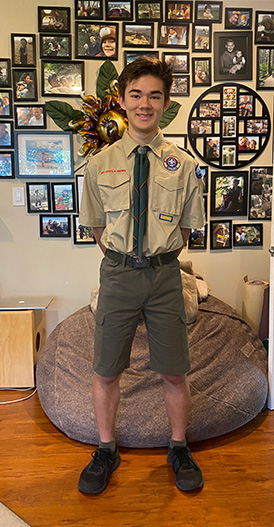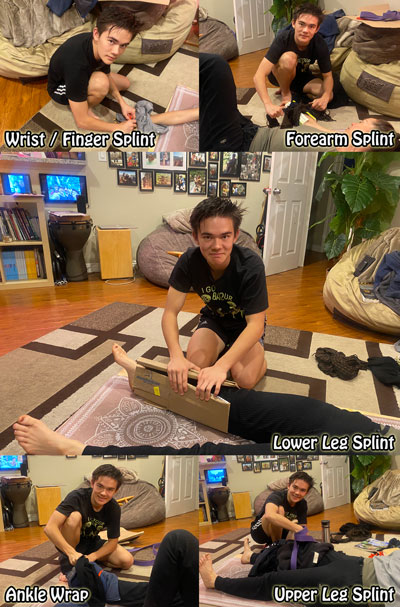Below are the requirements I completed for the First Aid Badge
Note: Click any image on this page to enlarge it in a new tab
ADDITIONAL REQUIREMENTS COMPLETED
In addition to the above, I also researched all the following areas and then completed a verbal presentation/interview to demonstrate my knowledge and understanding for each of them:
- Demonstrate to your counselor that you have current knowledge of all first-aid requirements for Tenderfoot, Second Class, and First Class ranks.
- Explain how you would obtain emergency medical assistance from:
- Your home
- A remote location on a wilderness camping trip
- An activity on open water
- Explain the standard precautions as applied to the transmission of infections. Discuss the ways you should protect yourself and the victim while administering first aid.
- Do the following:
- Prepare a first-aid kit for your home. Display and discuss its contents with your counselor.
- With an adult leader, inspect your troop’s first-aid kit. Evaluate it for completeness. Report your findings to your counselor and Scout leader.
- Describe the early signs and symptoms of each of the following and explain what actions you should take:
- Shock
- Heart Attack
- Stroke
- Do the following:
- Describe the conditions that must exist before performing CPR on a person. Then demonstrate proper CPR technique using a training device approved by your counselor.
- Explain the use of an automated external defibrillator (AED). Identify the location of the AED at your school, place of worship, and troop meeting place, if one is present.
- Do the following:
- Show the steps that need to be taken for someone who has a large open wound or cut that is not bleeding severely.
- Show the steps that need to be taken for someone who has a large open wound or cut that is severely bleeding.
- Explain when it is appropriate and not appropriate to use a tourniquet. List some of the benefits and dangers of the use of a tourniquet.
- Describe the proper application of a tourniquet.
- Explain when a bee sting could be life threatening and what action should be taken for prevention and for first aid.
- Do the following:
- Describe the signs and symptoms of an open or closed fracture or dislocation.
- Explain what measures should be taken to reduce the likelihood of further complications of fractures and dislocations.
- Describe the signs and symptoms, proper first-aid procedures, and possible prevention measures for the following conditions:
- Anaphylaxis/allergic reactions
- Asthma attack
- Bruises
- Sprains or strains
- Hypothermia
- Frostbite
- Burns—first, second, and third degree
- Concussion
- Convulsions/seizures
- Someone who is unconscious
- Dehydration
- Muscle cramps
- Heat exhaustion
- Heat stroke
- Abdominal pain
- Broken, chipped, or loosened tooth
- Do the following:
- Describe the conditions under which an injured person should be moved.
- If a sick or an injured person must be moved, tell how you would determine the best method. Demonstrate this method.
-
Teach another Scout a first-aid skill selected by your counselor.



